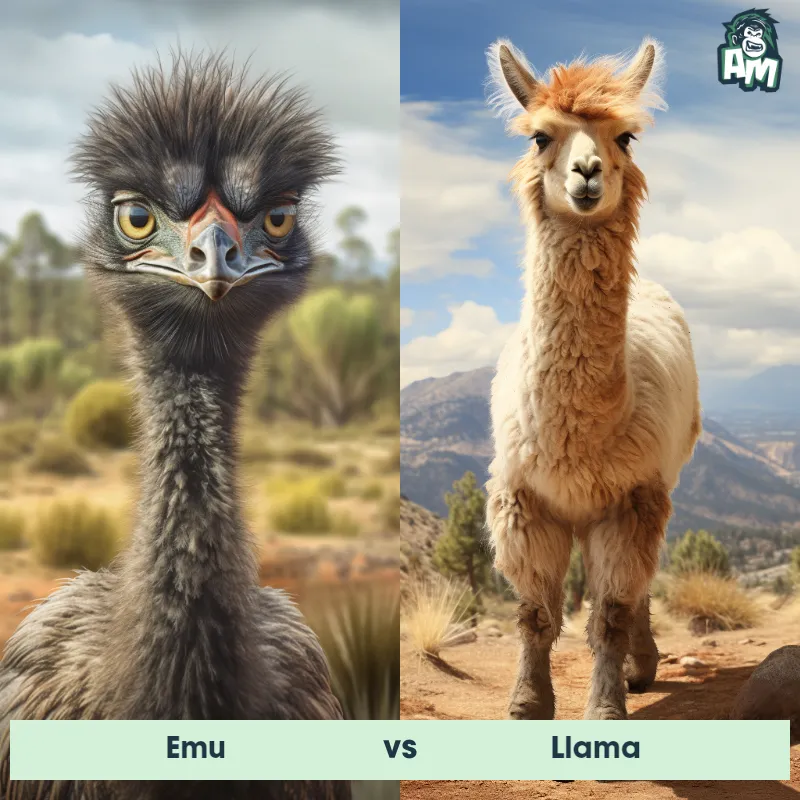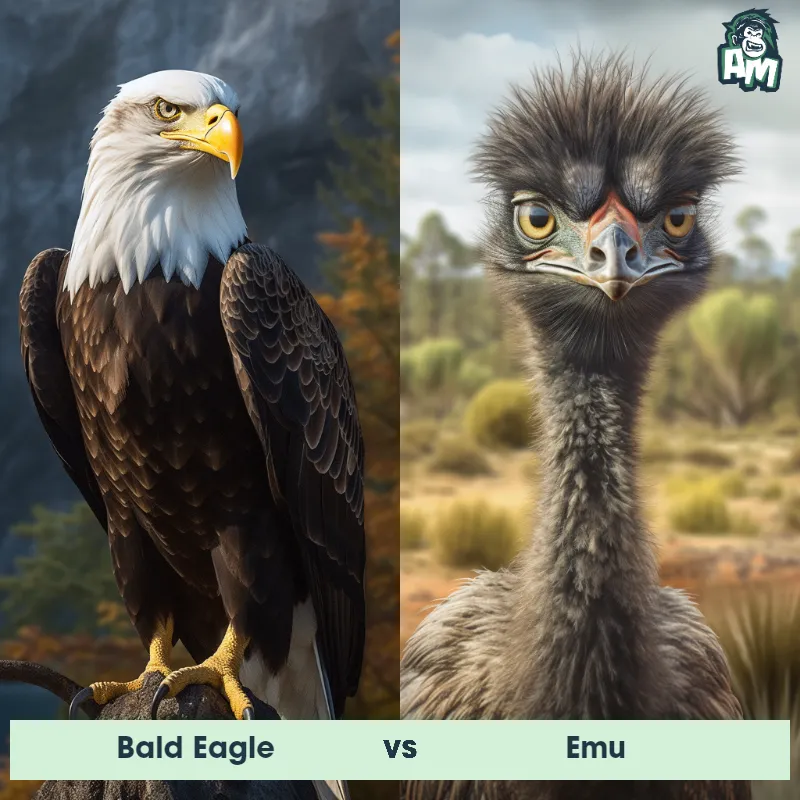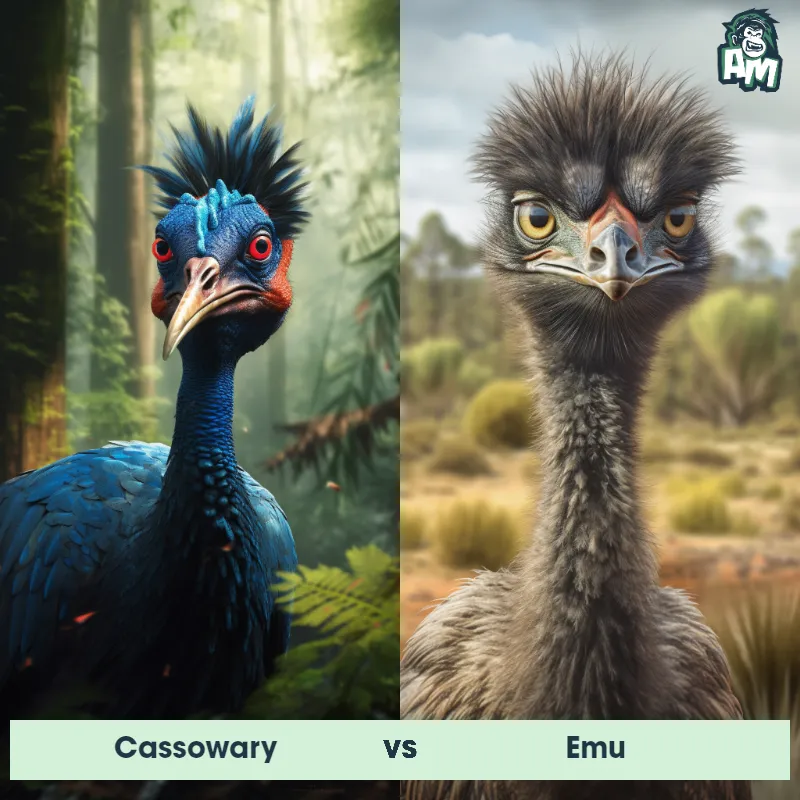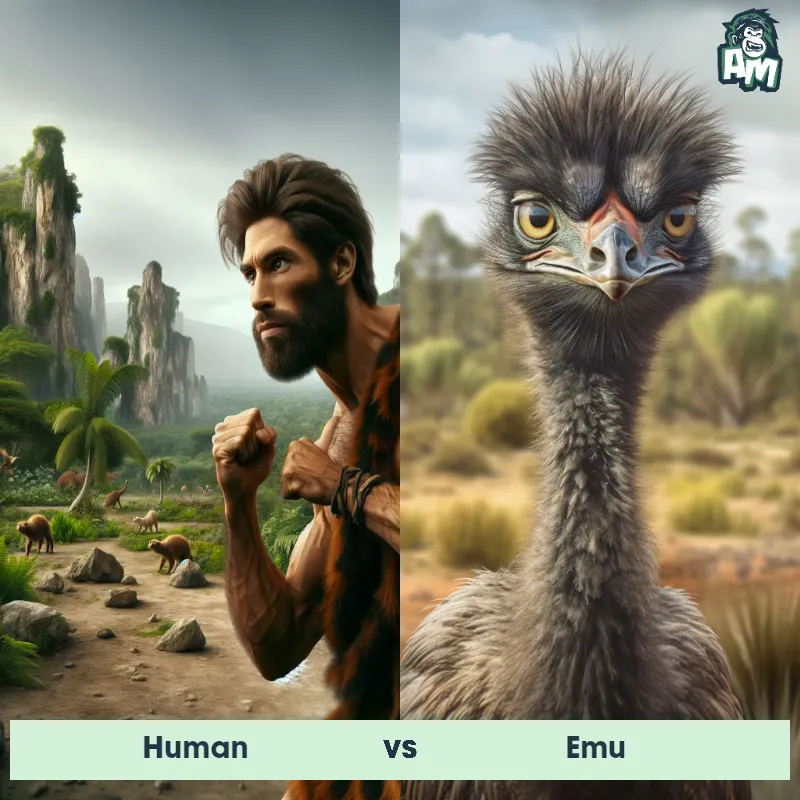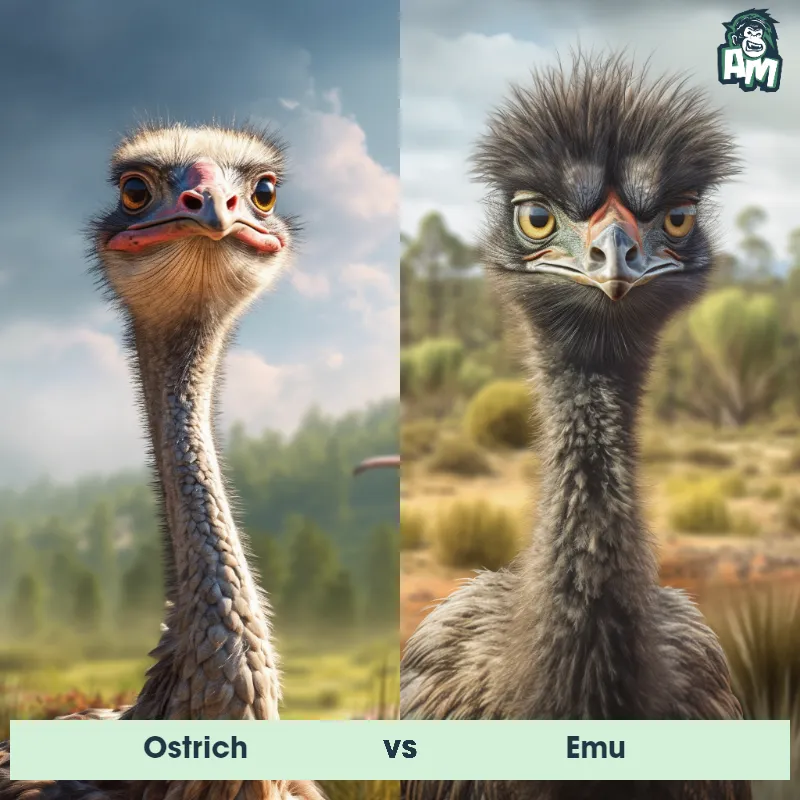The Emu
The Emu, scientifically known as Dromaius novaehollandiae, is the second-largest living bird in the world, standing at an impressive height of up to 6.2 feet 1.9 meters and weighing around 66-121 pounds 30-55 kilograms. These flightless birds possess long, strong legs and a distinctive, slender body covered in shaggy, brown feathers, which effectively serve as camouflage in their natural habitat. Emus are known for their unique beak, which is long and curved, allowing them to forage for various plant material, fruits, and even insects. They also have small, vestigial wings that are mainly used for balance during their fast running speeds.

| Emu | |
|---|---|
| Size | Up to 6 feet tall (1.8 meters) |
| Weight | Up to 120 pounds (54 kilograms) |
| Speed | Speed: 30 mph (48 km/hr) |
| Key Strength | Powerful legs and sharp claws |
| Biggest Weakness | Small wings and lack of aggression |
| Scientific Name | Dromaius novaehollandiae |
| Family | Dromaiidae |
| Habitat | Grasslands, savannas, and forests |
| Geography | Australia |
| Diet | Omnivorous, eating plants, insects, and small animals |
| Lifespan | 10 years - 20 years |

The Emu
The Emu, scientifically known as Dromaius novaehollandiae, is the second-largest living bird in the world, standing at an impressive height of up to 6.2 feet 1.9 meters and weighing around 66-121 pounds 30-55 kilograms. These flightless birds possess long, strong legs and a distinctive, slender body covered in shaggy, brown feathers, which effectively serve as camouflage in their natural habitat. Emus are known for their unique beak, which is long and curved, allowing them to forage for various plant material, fruits, and even insects. They also have small, vestigial wings that are mainly used for balance during their fast running speeds.
Fun Fact: One fascinating fact about Emus is that they possess a highly developed sense of hearing, capable of picking up low-frequency sounds well below the range of human hearing, which is crucial for communication, foraging, and avoiding potential threats in their environment.
| Emu | |
|---|---|
| Size | Up to 6 feet tall (1.8 meters) |
| Weight | Up to 120 pounds (54 kilograms) |
| Speed | Speed: 30 mph (48 km/hr) |
| Key Strength | Powerful legs and sharp claws |
| Biggest Weakness | Small wings and lack of aggression |
| Scientific Name | Dromaius novaehollandiae |
| Family | Dromaiidae |
| Habitat | Grasslands, savannas, and forests |
| Geography | Australia |
| Diet | Omnivorous, eating plants, insects, and small animals |
| Lifespan | 10 years - 20 years |
Emu Matchups
We use AI to simulate matchups between the Emu and other animals. Our simulation considers size, strength, and natural predatory behaviors to determine the most likely outcome.
Emu: Diet, Predators, Aggression, and Defensive Behaviors
What do Emus eat?
Emus are omnivores, which means they eat a variety of foods. Their diet consists of plants, insects, fruits, seeds, and even small animals like lizards and insects. They are known to forage for food by grazing on grass, shrubs, and other vegetation. Emus have been observed eating a wide range of plant species, making them adaptable feeders.
Do Emus have any predators?
Emus are typically large birds that do not have many natural predators in the wild. However, they can fall prey to dingoes, eagles, and feral pigs. Dingoes are known to attack emu chicks and young emus, while eagles may target emus of any age. Emus have developed strong legs and sharp claws to defend themselves against potential predators.
Are Emus aggressive?
Emus are generally not considered aggressive animals, but they can become defensive if they feel threatened. During the breeding season, male emus may exhibit aggressive behavior towards other males in order to establish dominance and attract females. They may use their sharp beaks and powerful legs to defend themselves or their territory if necessary.
Do Emus fight?
Emus may engage in fights with each other during the breeding season or when competing for mates. Male emus will sometimes battle with other males by charging, kicking, and pecking each other. These fights can be intense and may result in injuries such as cuts or bruises. Emus use their strong legs and sharp claws as weapons during these confrontations.
How do Emus defend themselves?
Emus have several ways of defending themselves against threats. They are fast runners and can reach speeds of up to 30 miles per hour, allowing them to escape from predators. In addition, emus have strong legs with sharp claws that they can use to kick and fend off attackers. They may also emit loud grunting noises or fluff up their feathers to appear larger and more intimidating.
What is the biggest weakness of Emus in a fight?
Despite their powerful legs and sharp claws, emus have a vulnerability when it comes to their size and weight. They are large birds that rely on their speed and agility to evade predators or opponents. If an emu is unable to outrun or outmaneuver a threat, it may struggle to defend itself effectively in a physical confrontation. This can make them susceptible to attacks from larger predators or rivals.
Fun Fact: Unlike most birds, the Emu does not possess feathers with a central shaft or barbs, making their plumage unique in the avian world. Instead, their feathers are loose and shaggy, resembling coarse hair, which helps protect them from sun exposure and aids in regulating body temperature in their hot, arid habitats.
Fun Fact: Emus are excellent swimmers and are known to cross rivers or bodies of water when necessary. They use their strong legs and webbed feet to paddle and move through the water, which not only allows them to access new food sources but also helps cool their bodies on hot days.





